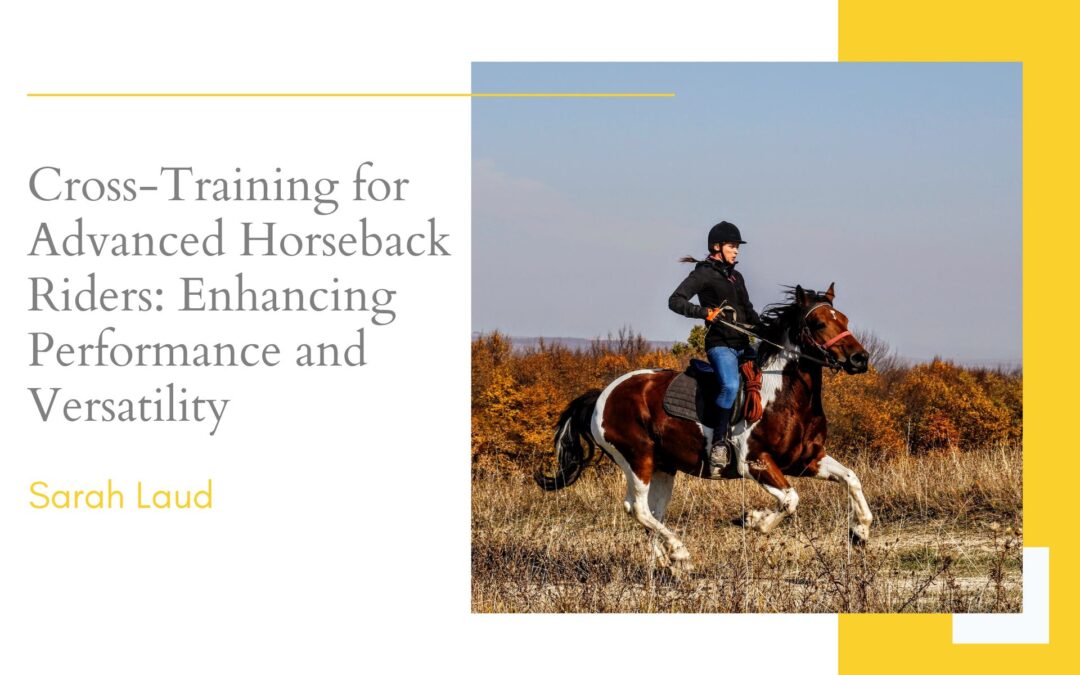For equestrian enthusiasts and advanced horseback riders, mastering one discipline may not be enough to reach their full potential. Cross-training, a concept well-known in various sports, can significantly enhance a rider’s performance and versatility. By diversifying their training routines and exploring different riding styles, horseback riders can improve their skills, form a deeper bond with their equine partners, and take their riding to new heights.
What is Cross-Training in Horseback Riding?
Cross-training in horseback riding involves engaging in various equestrian disciplines beyond one’s primary focus. For example, if a rider primarily competes in dressage, cross-training might include jumping, trail riding, or even western riding. The idea is to expose both rider and horse to different challenges, movements, and environments to develop a well-rounded set of skills.
Benefits of Cross-Training
1. Enhancing Riding Skills: Exposure to different riding styles forces riders to adapt and refine their techniques. This leads to improved balance, coordination, and responsiveness, which are crucial elements for any successful equestrian.
2. Strengthening Horse-Rider Bond: Cross-training encourages a deeper connection between horse and rider. Learning new skills together fosters trust and mutual understanding, resulting in a more harmonious partnership.
3. Preventing Boredom and Burnout: Focusing solely on one discipline can lead to burnout and diminished enthusiasm. Cross-training injects variety into the rider’s routine, making training more enjoyable and sustainable.
4. Improving Versatility: A rider well-versed in multiple disciplines is better equipped to handle diverse riding situations. Whether it’s a competitive event or a casual trail ride, versatility ensures a rider can adapt to any setting with confidence.
Cross-Training Activities
1. Jumping: Engaging in show jumping or cross-country riding helps improve a rider’s sense of timing, rhythm, and agility. It also enhances the horse’s athleticism and responsiveness to commands.
2. Western Riding: Trying western riding, like barrel racing or reining, introduces different cues and techniques that promote better communication between horse and rider.
3. Trail Riding: Exploring new terrains through trail riding exposes the horse to varying environments, which fosters adaptability and a calmer demeanor.
4. Dressage: Dressage training focuses on precision, control, and developing a balanced horse. Incorporating dressage exercises into cross-training refines the horse’s responsiveness and enhances the rider’s aids.
5. Endurance Riding: Long-distance rides build stamina and endurance for both horse and rider, allowing them to handle extended periods of physical activity.
Cross-training for advanced horseback riders offers a world of benefits beyond specialization in one discipline. By diversifying their training regimen, riders can enhance their skills, deepen their connection with their horses, and enjoy a more fulfilling equestrian journey. The journey of cross-training is not about abandoning one discipline for another; rather, it is about embracing the versatility that enriches the rider’s capabilities. As riders and horse enthusiasts, we can all benefit from expanding our horizons, broadening our skills, and forging stronger partnerships with our equine companions.

